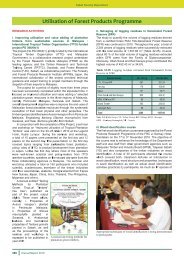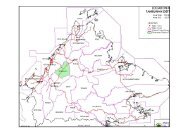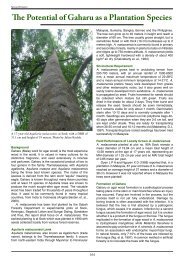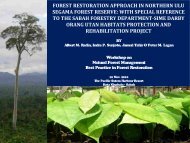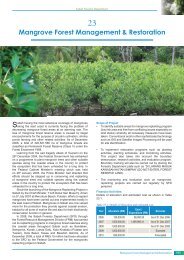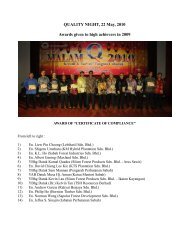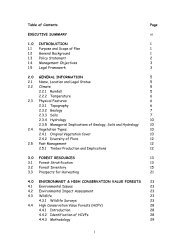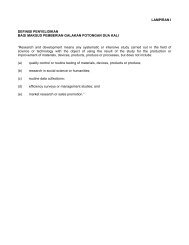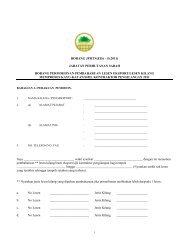Malaysia - Sabah Forestry Department
Malaysia - Sabah Forestry Department
Malaysia - Sabah Forestry Department
You also want an ePaper? Increase the reach of your titles
YUMPU automatically turns print PDFs into web optimized ePapers that Google loves.
INSECT DIVERSITY OF KAWAG BASE CAMP, ULU SEGAMA-MALUA FORESTRESERVES, SABAHPrincipal investigators:Assisted by:Arthur Y. C. ChungAndi Maryani A. M.Nurul Aqidah IbrahimJohn Lee YukangM.A. Tajuddin MustaphaAndi Sabrina A.M.Mustapha ChuaPetronella Dasim (preparation of report)SUMMARYAn insect diversity survey was carried out from 13 th to 17 th of February, 2012 at theKawag Base Camp within the Ulu Segama-Malua Forest Reserves (USM FRs). TheBase Camp is the centre of administration for USM FRs, covering an area of 241,089ha. This survey was conducted together with the EIA fieldwork, with the same teamreporting on wildlife mitigation and monitoring measures within USM FRs, for thepreparation of the EIA report.Among the flagship insect species recorded during the survey were the Moon Moth(Actias maenas), Atlas Moth (Archaeoattacus staudingeri) and the Stag Beetle(Odontolabis dalmani). Interesting information from insects can be incorporated topromote ecotourism when the Kawag Riverside Lodge is established in the near future.Some Bornean endemic species were also recorded, namely the Three-horned Beetle,Chalcosoma moellenkampi and four Tiger Moth species (Cyana maiae, Cyana saulia,Spilosoma hosei and Amata prepuncta). Information from insect diversity can beused to support and enhance conservation effort within USM FRs. Despite theinteresting insects recorded, the nocturnal insect diversity during the survey was low.This was partly due to the proliferation of a few flying ant species as part of theirnuptial and mating process.The various wildlife mitigation measures implemented at Kawag and throughoutUSM FRs indirectly contribute significantly to insect diversity and conservation. TheDFO of USM FRs and his staff should be commended for their pro-active action andenforcement on the wildlife monitoring programmes.Note: Some of the insect identifications are still tentative and subject to confirmation. This report willbe further improved with comments from various experts.3



